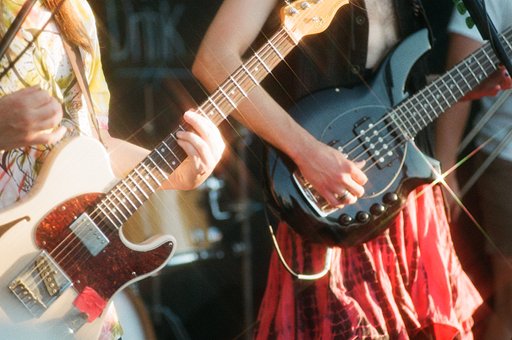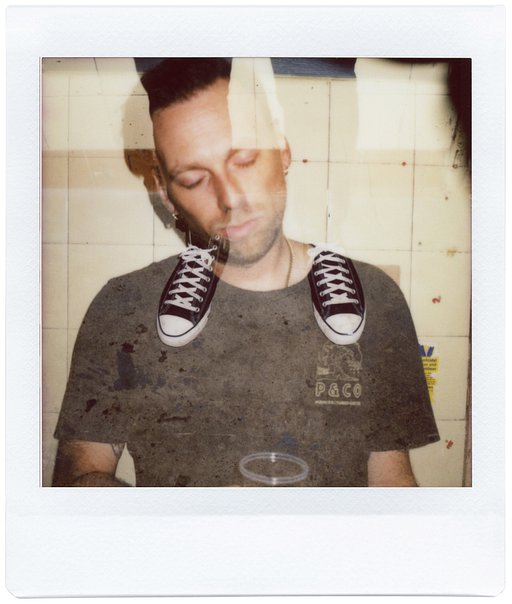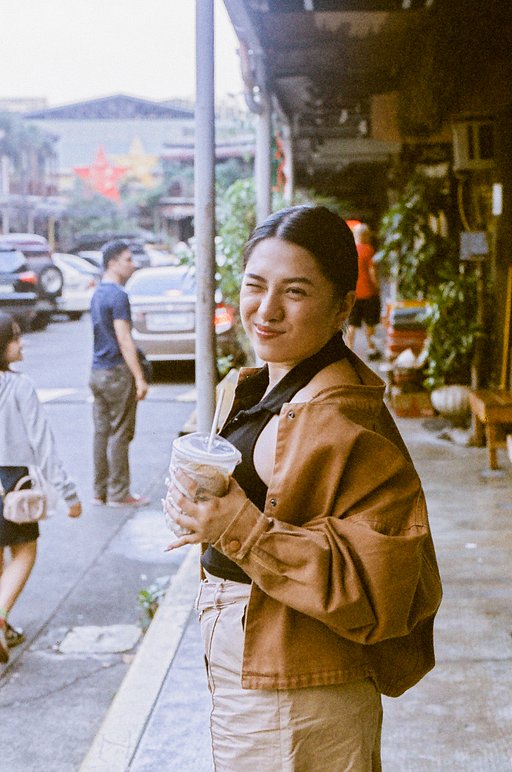100% Analogue: A Darkroom Love Story with Jahan Saber from DEVELOP
18 Share TweetVienna-based photographer Jahan Saber loves the film medium the likes of which we've rarely seen. From shooting to self-developing and printing, the darkroom feels like home for his creative mind. Jahan lives for artistic freedom and deep feelings procured by controlling the narrative of his work, every step of the way. We were honored to have him as an early tester of the LomoChrome Metropolis and Berlin Kino 2019 films; check out his delicate shots below and hear more about his work in the darkroom.
Hi Jahan! Could you introduce yourself in a few words to our readers?
Hi there, I’m Jahan, the guy behind doyoudevelop – I’m a photo-artist that exclusively works with the analogue process – that means I shoot on film, I develop and print in the darkroom.
You recently got rid of all your digital cameras – what got you started into film photography and was it easy to go full analogue?
When I was a kid and an early teenager, film was still the standard way of shooting. Digital was just in the making, so my first connections with photography were all analogue. I remember watching slides being projected on my living room wall when my parents and I had come back from a trip to India and they were showing some of the photos they made. Inserting a film into the camera, getting it developed, waiting for the prints or making them yourself – that was the norm for me. So, I was hooked on the medium of photography right from the start, even before I knew it! Even my mom was printing in the darkroom and we always had prints around the house. I started shooting when I was around 16 years old but never really put much thought into it until I picked up a film camera when I briefly attended photography school after graduating high school.
When Instagram came around and took off, I was quick to join the hype and started posting much of my work (then digital), but it was all gibberish. I was just copying what was happening around me and didn’t really put much thought into the work I was producing. In 2016, I had enough of the oversaturation and mindless output that was everywhere in the social media world and decided it was time to slow down. I created my own label DEVELOP and immediately sought out the connection to creating a philosophy that forces you to slow down, think about your actions and produce work that comes with a deeper meaning.
Your favourite mediums are black & white and large format – could you explain these creative choices?
That question can be a real minefield, haha! I enjoy black and white because it enables me to draw focus from the sensory distractions that colour can have, but also produce an abstraction of a subject that helps you dream. I mainly shoot on 35mm, because that’s just the way my mind works. I feel like it’s the right medium for the way I think, it can keep up with my thoughts. Large format is another level of slowing down and I’ve only been at it for just a year now. It’s something else. Something that I can’t really put into words yet. It has put photography in another light for me.
What do you look for when you’re shooting a photo?
Emotions, melancholy, passion, a story, fantasy. I don’t necessarily want to document life as it is, I like documenting how my emotions perceive a certain situation. I enforce that subjectivity. I don’t ever think photos can be objective, so why chase the unattainable when you can embrace your own vision?
Could you share with us your favourite photo and the story behind it?
This really wasn’t easy, and I’ve got to say, I have one photograph that means the world to me, but it will remain private, for now at least. The one I’ve chosen was extremely meaningful in terms of what my state-of-mind was turning into at the time. It was a changing moment for me because I was struggling quite a bit with what my vision was and what I wanted to achieve with my photography. When I took this shot, I noticed that I was at a crossroads because I realized that I was still haunted by many things from my past and wasn’t really listening to my inner voice and the drive that motivates me to take photos. I think there was a strong longing for a direction that I wanted to move towards and this time really was memorable for that.

You seem to spend most of your time in the darkroom. What’s your mood like when you’re developing films?
Mostly calm. It’s magical and I advise everyone who has access to one or who intends to try it out, to absolutely do it. I think hardly anyone who is under 28 has a clue what happens in a darkroom. (Like the confusion that Jonathan in “Stranger Things” created towards young viewers when he went to make his prints...) Working in the darkroom requires a certain discipline though, especially when you’ve got lots of work to do. Music helps but it affects my mood, and that can be a good thing or a bad thing. I’ve probably gone through every feeling in that place. It’s a unique experience.
How do you operate for your darkroom manipulations? Do you always have a specific idea in mind or does it come spontaneously to you?
I always work in batches. When I develop films, I’ll do like 10-15 rolls at once and then straight onto producing contact sheets. Once they are done I’ll inspect them and start working my way through each sheet, selecting the prints I want to make of the single frames. Since everything is analogue, the first time I get a proper sense of what an image might look like is when I’ve made a contact sheet (a contact sheet is a direct print, a positive image, of all the negatives onto one page, without changing the scale). I try to stick to that, just to follow some sort of order, but sometimes I just find pictures I like and that work together stylistically.
You’ve recently shot with the Berlin Kino 400 2019 formula and the LomoChrome Metropolis, in 35 mm. What were your impressions about the films? In what settings did you shoot these rolls?
Judging films is always difficult when a digital process is involved, at least for black and white. I’ve yet to make some prints of the new Berlin Kino 400 2019 formula, but what I’ve seen from the negatives and the scans, it looks promising. There’s a much stronger shadow detail retention than previously. The Metropolis surprised me completely, I was expecting a different colour palette. After looking at it again I do see the appeal in it and I’m lucky enough to have another roll that I can test in a different setting.
You’re a member of several film photography collectives (AllFormat Collective & Wien Analog ). Does being part of them help you with your personal work and inspiration?
I think being surrounded by a group of people that have a similar interest, yet often a completely different approach to photography, or life in general, is not only helpful at times but also necessary to push your own boundaries of understanding a medium. I see most photographers often going through creative ruts and struggling with pushing ideas through, and most of the time this is due to a lack of communication. I’ve had countless occasions where my fellow colleagues have not only given valid input to my work but also helped me look at things differently.
As a multi-skilled human being, you also teach film photography basics on Skillshare! What are the most important tips you could give to someone getting started?
Thank you! Well, sign up to my course and find out! Hah! In all honesty, the most important thing you can do when it comes to any art form is not being afraid of stumbling and making mistakes. Go out there and shoot. Learn from your experiences. Question your outcome. Go back and do it again. Be better. And perhaps the most important thing is, write it down. Keep notes of your progress. This doesn’t only help you with keeping track but also enables you to look back and see where you’ve come from.
Do you have any upcoming projects you’d like to talk about?
There’s one or two things floating around in my mind but nothing concrete yet. A small selection from a project that I’ve completed this summer is exhibited at the Jonas Reindl Café by the Schottentor in Vienna. It takes its inspiration from the F. Scott Fitzgerald Novel Tender is the night and the poem that inspired the title Ode to a nightingale by John Keats. It’s an invitation to daydream and to look beyond the obvious. The photos force you to look at them longer. It’s nothing fast, something that grows on you. The antithesis to our modern life. Have a look!
Thank you Jahan for answering our questions! You may check more of his work and prints on his Instagram and Website.
written by Charlotte Pelleray on 2019-11-22 #people #berlinkino400 #lomochromemetropolis




























No Comments